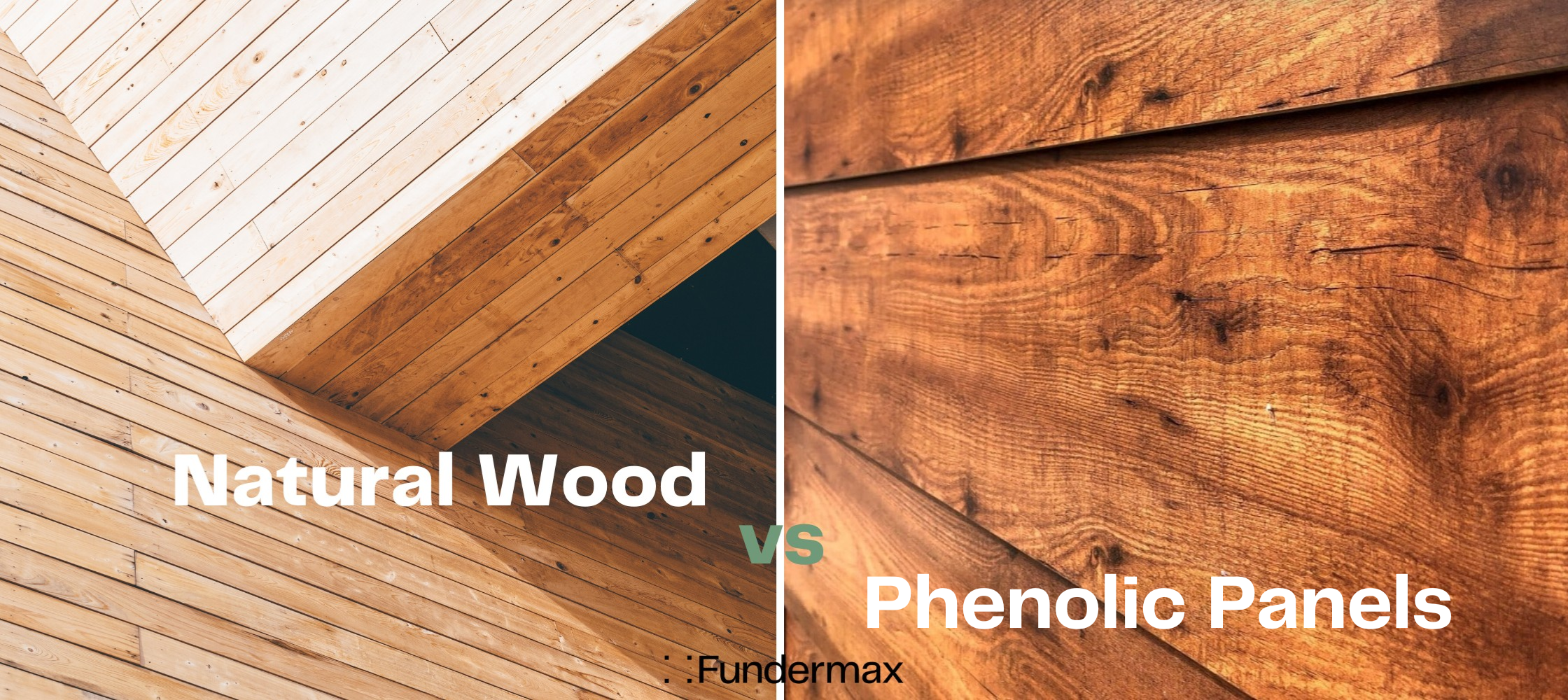
Natural Wood Panels vs. Phenolic Panels
| Last updated August 26, 2025
Choosing the right wall panel material involves several factors including desired aesthetic, budget, and environmental exposures.
Natural wood panels and phenolic panels (also called HPL or high-pressure laminate panels) are two very popular options for anyone who desires an organic wood aesthetic.
To help you decide between natural wood vs phenolic panels, we have gathered information about both materials to provide you with a comprehensive comparison.
Benefits of Natural Wood Panels
Aesthetics
Natural wood paneling has been used for centuries, and it has seen a significant resurgence in design popularity in recent years. Regardless of more practical benefits, natural wood offers a cozy, warm aesthetic that is highly desirable in both residential and commercial applications.
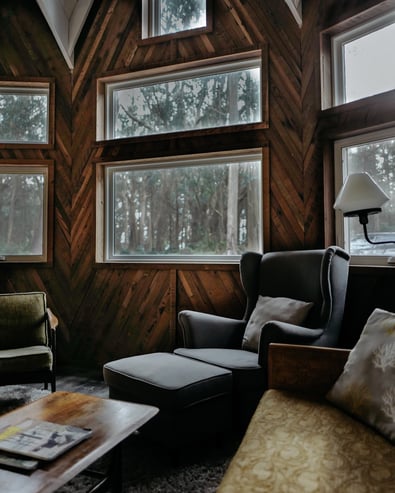
Eco-Friendly
If sourced properly, natural wood panels are an all-around eco-friendly choice. Wood is a natural product, easily recyclable, and biodegradable. To ensure that your wood panels are environmentally responsible, confirm that your materials are sourced from FSC-certified forests, or choose panels crafted from reclaimed wood.
Antimicrobial
Wood is naturally antimicrobial, consistently showing the ability to halt the growth of and kill bacteria on its surface. A high-quality wooden surface will last years without a decrease in its antimicrobial properties.
Insulated
Thermal and acoustic insulation are two of the most popular benefits of natural wood panels. Wood is a natural insulator, which means it does a good job of keeping a room warm or cool, and it also means enhanced acoustics. This makes wood wall cladding a great option for people looking for quiet and privacy. A large number of commercial clients opt for wood panels for the same reason.
Benefits of Phenolic Panels
Code Compliance
Fire resistance and code compliance are issues of great importance when recommending and choosing building materials. A phenolic wall panel system offers far more fire protection than natural wood. Phenolic cladding panels have a standard Class B fire rating, and all Fundermax exterior phenolic wall panels are Class A fire rated.
Aesthetics
One of the most exciting phenolic panel benefits is design flexibility. The technology of the material goes far beyond the performance aspect and carries over to the aesthetic side, with phenolic cladding panels made to look like natural wood, stone, metal, and more. (Fundermax even offers a custom option where any design can be printed on a phenolic panel system.)
Durability and Low Maintenance
Two hallmark benefits of phenolic panels are the material’s durability and minimal need for maintenance. A phenolic wall panel system is made for performance and is impact-, scratch-, weather-, and chemical-resistant. This kind of durability -- with minimal maintenance required -- remains a standout feature of this material.
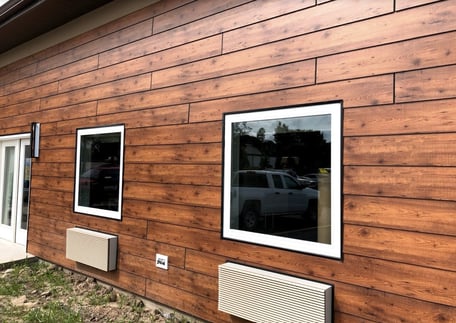
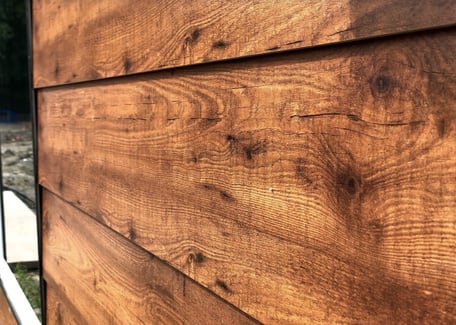
Phenolic Panels vs Natural Wood Panels: What is Best?
Phenolic panels and natural wood panels are both excellent materials. Choosing which is best will depend on the specifications of your project. Consider the following key factors:
Panel Location
Where are you installing the wall panel system? Will these be exterior wall panels or interior? Will the wall panel system be exposed to high traffic?
If your project is a small residential library, office, or den, the natural wood panels may provide just the right feel while remaining protected from high-impact traffic.
If, on the other hand, your project is in a more exposed or high-traffic location, you may want to opt for the durability offered by phenolic panels, which are made to withstand even high-traffic, sidewalk-level installations.
Environmental Factors
To what kind of environmental factors will the wall panel system be exposed? What kind of impact will the effects of the sun or other weather-related exposures have on the wall panel material and not only the design aesthetic? (This is primarily a question of exterior weather exposure, but consider possible interior exposures like humidity and UV exposure.)
If your design intends to highlight the look of natural weathering over time, then the scratches, knicks, and color changes in natural wood panels may benefit the overall aesthetic. In this case, be sure to take measures to preserve the functional integrity of the material and protect against warping and splitting.
If you plan to incorporate the organic aesthetic of wood, but wish to preserve the look as originally designed (without the fluctuation of unpredictable weathering and the maintenance that goes with it), then a better choice will be a phenolic panel system crafted with a natural-looking finish. High-quality phenolic panels are hail-resistant, moisture-resistant, and colorfast, so they will not fade or deteriorate in the sun.
Budget
When comparing the price of natural wood vs phenolic panels, overall, a phenolic wall panel system is generally the more expensive option. (Although, high-quality wood panels are not exactly inexpensive. Compared to low-pressure laminates and other wood alternatives, natural wood ranks as the more expensive material.)
The most helpful comparison when looking at budget implications is a Total Cost of Ownership (or TCO) analysis. If the only budget concern is the upfront cost, then a simple price-per-panel comparison may suffice. However, making a wise investment in materials you must consider TCO if you're going to change it!
Consider that, while phenolic panels often come with a higher purchase price, the durability, longevity, and low maintenance of the material make it a very cost-effective option.
Cleanability
What kind of hygienic demands does your project present? In a phenolic panel vs natural wood panel comparison, both materials are antimicrobial. Another relevant factor, then, is cleanability.
While wood is naturally antimicrobial, it is a natural, porous material. When wood panels need to be cleaned, you are limited to gentle, mild cleaners so you do not damage the wood. With cleaning phenolic panels, on the other hand, the non-porous surface makes for easy cleaning when necessary -- even harsh, regular cleaning protocols for removing bacteria, stains, or graffiti.
Installation methods
Natural wood paneling and phenolic wall panel systems are easy to install. One distinction, however, is that a phenolic wall panel system requires the installation of a substructure in order to ensure maximum durability and longevity. Some wood panel installations require a subframe as well, but not always, and can offer a quick and simple installation. Additionally, when you install phhenolic panels you get the benefits of a rainscreen wall, which is not always the case with wood cladding, though.
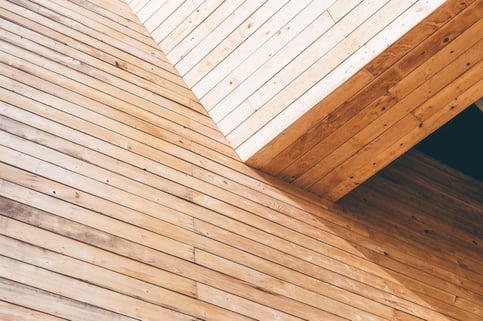
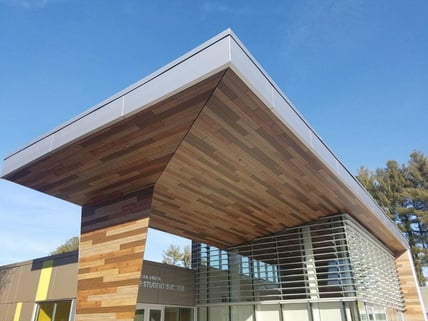
We know that choosing between two excellent materials can be a challenge. After taking the time to consider the specifications and demands of your project and the benefits and capabilities of each material, we hope you can land on one side of the natural wood vs phenolic panel decision with confidence.
As one of the leading phenolic panel manufacturers in the world, we are particularly well-versed in all things phenolic panels, and we would be more than happy to answer any questions you might have about using a phenolic wall panel system for your project.
Contact Fundermax today for more information.

